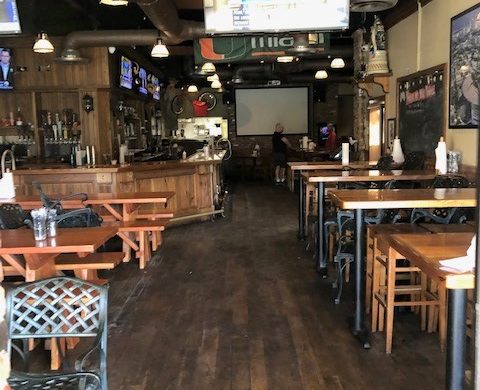
COVID-19: Food Service Uncertainty
What’s the Situation?
To Our Valued Suppliers:
In order to combat the spread of the COVID-19 virus, the Governor has limited restaurants to 50% capacity, and staggered seating. In our local market, the mayor has issued emergency orders, enacting further restrictions on restaurant dining. This will obviously have a tremendous impact on our customers, and therefore our company. To ensure our ability to distribute your products and service our customers well into the future, we need your help. We respectfully request that you provide our company with modified payment terms for the duration of the restrictions placed by federal, state and local authorities. The cooperation of our business partners is vital to our success during this difficult time.
Over the course of the past weeks letters like these have become a common sight in the food service industry. Restaurant sales have faded and people have shifted their buying to supermarkets. Popular food items being purchased are rice, beans, and pasta. This virus is changing certain parts of the food service industry before our very eyes. Restaurants and countless other businesses are facing very stormy times as they reduce the number of workers, wages, with some will end up having to close their doors for good.
How Should We Think about Disruption within the Food Service Industry?
As per Wikipedia – “Food service, defines those businesses, institutions, and companies responsible for any meal prepared outside the home”. A broader definition could include distributors, wholesalers, mom-pop businesses like convenience stores, and you could even consider food trucks.
Due to the coronavirus, local governments have imposed limits on restaurants, bars, and taverns for the greater good of the public. Delivery, takeout, or closing are the only options these businesses have for now. As these businesses are forced to close or alter their services, they cannot sell food and restaurant suppliers are stuck with tons of unsold food. Job losses, purchase order cancellations, and uncertainty has become reality for certain parts of the food service sector.
What options do food suppliers who service restaurants have? Can they pivot to supermarkets and retail? It is very hard to change a business model from serving restaurants to supermarkets, but this is exactly what is happening in food service. When people are forced to exercise social distancing and consume the majority of their meals from home, certain sectors of the food service industry suffer and others benefit. For example, supermarkets like Kroger and big box retailers such as Costco are seeing increased business. Due to the uptick in demand they are looking to hire new drivers and employees to keep shelves stocked. This is the dichotomy that exists in the food service industry today.
Coronavirus
First, let’s go back and remember all agriculture begins in the soil. Farmers plant according their region and the crops expected to yield the most money come harvest time. Farmers contend with a myriad of factors during the planting, growing and harvest season. When mother nature causes a crop shortage supply and demand trends are affected. COVID-19 has exacerbated these trends. Panic buying, long lines, and low inventories have become routine in local grocery stores.
Moreover, 2019 has been one of the worst bean harvests in recent memory. Early snow, rains, warm weather, and more rains disrupted growth and harvest. Because the soil was soaked, farmers were not able to get enough beans out of the ground. The bean crop shortage has caused a huge lack of supply within the industry. During this year’s harvest, low supply and price spikes moved along the supply chain from farmers to end-users. As price soared and supply issues manifested, market demand continued. And now with the virus, food service is being turned upside down and the vertical supply chain is being squeezed from both ends.
Beans continue selling in record numbers. The spike in demand has caught the dry edible bean industry off-guard. The demand is placing large amounts of pressure on producers, logistics, and distributors. Certain market participants will benefit such as growers, which welcome higher crop values after suffering deflated prices for a long time. Consumers on the other hand can expect to see higher prices until new crop, or as long as low supply and high demand continues.
Final Thoughts
Be thankful that the US is self-sufficient in its food supply. Although things seem uncertain for the restaurant, hospitality, and food service industry, better times are around the corner. It is very important to get ahead and “flatten the curve” in our communities. Social distancing, quarantine, and implementing good hygiene will go a long way to curtail the spread of the virus. Our family and company wishes our entire network of customers, suppliers, and transport specialists good health. In the meantime, please stay safe and remember to wash your hands.
Learn More about us
For delicious bean recipes please follow us on Pinterest
Our mission is to provide the highest quality agricultural products to customers around the world.
Great agriculture means great food!
